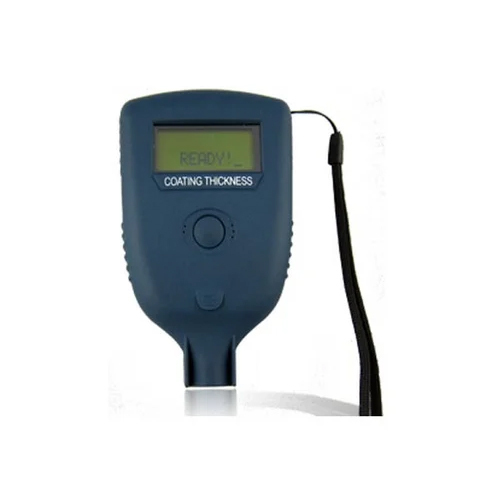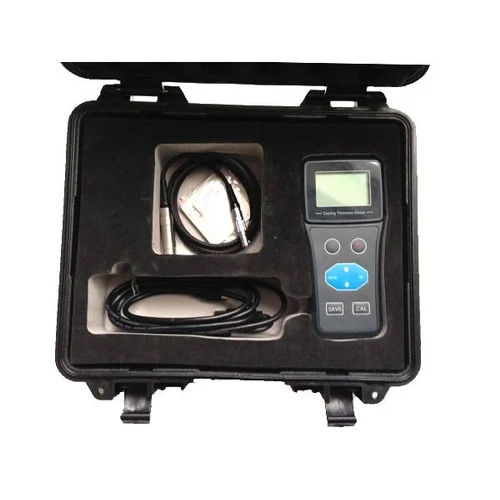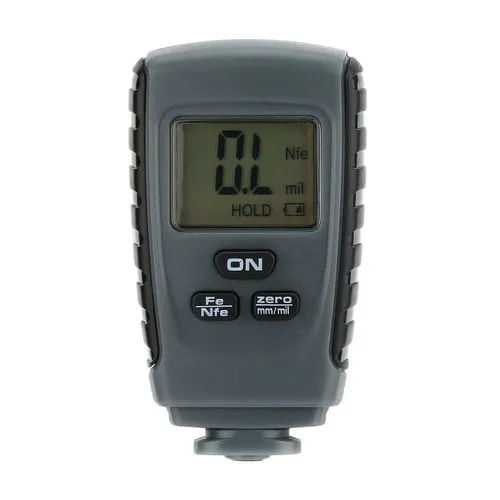Ultrasonic Digital Thickness Gauge B2 BY NDT1 KRAFT
200000 INR/Piece
Product Details:
- Color Black
- Usage Industrial
- Display 4-digit display
- Product Type Ultrasonic Digital Thickness Gauge
- Accuracy 0.1 % %
- Click to View more
X
Ultrasonic Digital Thickness Gauge B2 BY NDT1 KRAFT Price And Quantity
- 200000 INR/Piece
- 1 Piece
Ultrasonic Digital Thickness Gauge B2 BY NDT1 KRAFT Product Specifications
- 0.1 % %
- Black
- 4-digit display
- Ultrasonic Digital Thickness Gauge
- Industrial
Ultrasonic Digital Thickness Gauge B2 BY NDT1 KRAFT Trade Information
- 100 Piece Per Month
- 7 Days
- All India
Product Description
An Ultrasonic Digital Thickness Gauge B2 BY NDT1 KRAFT is a device used to measure the thickness of various materials using ultrasonic technology. This type of gauge is commonly used in industries such as manufacturing, construction, automotive, and aerospace for quality control and inspection purposes.
Here's how it typically works:
1. Transducer: The gauge has a transducer that emits ultrasonic waves. These waves travel through the material being measured.
2. Reception of Signals: Once the ultrasonic waves encounter the opposite surface of the material or a boundary within the material, they bounce back towards the transducer.
3. Measurement: The gauge measures the time it takes for the ultrasonic waves to travel from the transducer, reflect off the material's surface or boundary, and return. Using the known speed of sound in the material, the gauge calculates the thickness of the material.
4. Display: The measured thickness is displayed digitally on the gauge's screen, providing a precise reading.
Some key features of ultrasonic digital thickness gauges may include:
1. Multiple Measurement Modes: They may offer various measurement modes such as single-point, multiple-point, and scan mode for scanning large areas.
2. Memory: Many gauges have built-in memory to store measurement data for later analysis or documentation.
3. Calibration: They often come with calibration options to ensure accurate measurements across different materials and thickness ranges.
4. Data Output: Some gauges allow for data output, enabling connectivity to computers or other devices for further analysis or record-keeping.
5. Durability: Depending on the application, these gauges may be designed to withstand harsh environments or specific industrial conditions.
6. Portability: Many modern ultrasonic thickness gauges are compact and lightweight, making them easy to carry around for on-site inspections.
Ultrasonic Digital Thickness Gauge B2 BY NDT1 KRAFT FAQ:
Q. What is an ultrasonic digital thickness gauge?
Ans: An ultrasonic digital thickness gauge is a device used to measure the thickness of materials using ultrasonic waves. It emits ultrasonic pulses into the material and measures the time taken for the waves to bounce back, calculating the material's thickness.
Q. How does an ultrasonic thickness gauge work?
Ans: The gauge emits ultrasonic waves into the material being measured. These waves travel through the material until they encounter a boundary or the opposite surface. The gauge measures the time it takes for the waves to return, and using the known speed of sound in the material, calculates the thickness.
Q. What materials can an ultrasonic thickness gauge measure?
Ans: Ultrasonic thickness gauges can measure a wide range of materials including metals, plastics, glass, composites, and more. The material's acoustic properties determine the accuracy of the measurement.
Q. What are the advantages of using an ultrasonic thickness gauge?
Ans: Advantages include non-destructive testing, high accuracy, versatility in measuring various materials, ease of use, and portability for on-site inspections.
Q. How accurate are ultrasonic thickness gauges?
Ans: Accuracy depends on factors such as the quality of the gauge, calibration, surface conditions, and the material being measured. Generally, high-quality gauges can achieve accuracies within a few thousandths of an inch or microns.
Q. Can ultrasonic thickness gauges measure through coatings or paint?
Ans: Yes, some models of ultrasonic thickness gauges have capabilities to measure through coatings or paint layers on the surface of the material. This is particularly useful in industries where corrosion protection coatings are common.
Q. How do I calibrate an ultrasonic thickness gauge?
Ans: Calibration procedures vary depending on the manufacturer and model of the gauge. Typically, calibration involves using a set of reference samples with known thicknesses to adjust the gauge's settings for accurate measurements.
Q. Are there any safety considerations when using ultrasonic thickness gauges?
Ans: While ultrasonic thickness gauges are generally safe to use, operators should follow safety guidelines provided by the manufacturer. This may include wearing appropriate personal protective equipment and ensuring proper handling of the device.
Q. Can ultrasonic thickness gauges measure temperature?
Ans: Some advanced models of ultrasonic thickness gauges may have temperature compensation features to account for changes in material properties due to temperature variations. However, direct temperature measurement is not a standard function of these gauges.
Q. Are ultrasonic thickness gauges suitable for use in all environments?
Ans: Ultrasonic thickness gauges are versatile and can be used in various environments. However, extreme temperatures, high levels of humidity, or hazardous conditions may require specialized gauges designed for such environments.
Tell us about your requirement

Price:
Quantity
Select Unit
- 50
- 100
- 200
- 250
- 500
- 1000+
Additional detail
Mobile number
Email
 English
English Spanish
Spanish French
French German
German Italian
Italian Chinese (Simplified)
Chinese (Simplified) Japanese
Japanese Korean
Korean Arabic
Arabic Portuguese
Portuguese






 Call Me Free
Call Me Free
